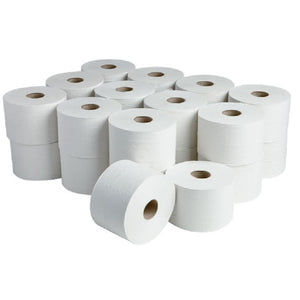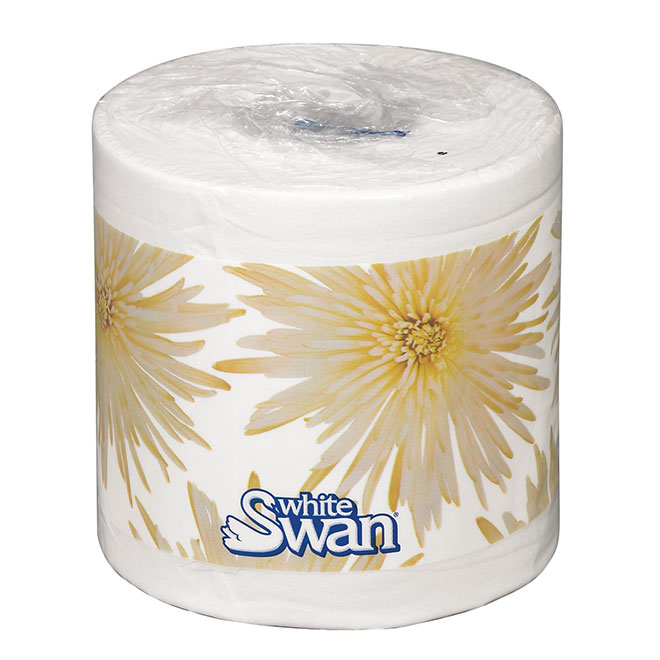In a world where multi-ply toilet paper reigns supreme, the humble 1-ply option often goes unnoticed and underappreciated. However, this single-layer tissue has been gaining popularity for its unique set of advantages in recent years. From being environmentally friendly to cost-effective and gentle on sensitive skin, 1-ply toilet paper offers a comprehensive tissue experience that goes beyond its simple construction. In this article, we will delve into the world of 1-ply toilet paper and explore its various benefits, applications, and innovations.
Comparing 1-Ply vs. Multi-Ply Toilet Paper: A Guide to Cost, Comfort, and Sustainability

When it comes to purchasing toilet paper, one of the primary considerations is the number of layers or plies. While multi-ply options have been the go-to choice for many, here are some factors to consider when comparing them to 1-ply toilet paper.
Understanding the Properties and Applications of 1-Ply Toilet Paper
The structure of 1-ply toilet paper consists of a single layer of tissue, typically made from recycled paper or a blend of virgin and recycled fibers. This results in a lightweight and absorbent material with a thinner profile, making it easier to handle and store. On the other hand, multi-ply toilet paper contains multiple layers that are bonded together, creating a thicker and softer texture.
One common misconception about 1-ply toilet paper is that it is not as durable as its multi-ply counterparts. However, advancements in technology and production processes have led to the development of stronger and more resilient 1-ply options that can compete with multi-ply tissues.
The Eco-Conscious Choice: Exploring the Environmental Benefits of 1-Ply Toilet Paper
One of the main advantages of 1-ply toilet paper is its reduced environmental impact. As it requires less material to produce, it contributes to a lower carbon footprint. This makes it a more sustainable option compared to multi-ply toilet paper, which uses more resources in production.
Furthermore, 1-ply toilet paper is often made from recycled materials, making it an even greener choice. By opting for 1-ply options, consumers can help divert waste from landfills and promote resource conservation.
Cost-Effectiveness: A Major Factor in Choosing 1-Ply Toilet Paper
In addition to being environmentally friendly, 1-ply toilet paper is also significantly more affordable than multi-ply options. Due to its single layer, it requires less production costs, resulting in a lower price point for consumers. This makes it a practical choice for those looking to save money on their bathroom essentials without compromising on quality.
1-Ply Toilet Paper for Sensitive Skin: A Gentle Touch for Optimal Hygiene

For individuals with sensitive skin, the thought of using rough and abrasive toilet paper can be daunting. This is where 1-ply toilet paper shines, as its thinner profile and softer texture make it a gentler option for delicate skin.
Moreover, 1-ply toilet paper is often free from added fragrances or dyes that can irritate sensitive skin. This makes it a safer and more comfortable choice for those with allergies or skin sensitivities.
Unveiling the Comfort Factor: The Role of 1-Ply Toilet Paper in Preventing Irritation
Aside from being gentle on sensitive skin, 1-ply toilet paper can also prevent irritation and discomfort for all users. Its thin and smooth texture allows for a more efficient and comfortable cleaning experience, without causing irritation or chafing.
Multi-ply toilet paper, on the other hand, may contain rough layers that can aggravate existing skin conditions or cause discomfort during use. This makes 1-ply toilet paper a better choice for those looking for a more comfortable and hygienic bathroom experience.
1-Ply Toilet Paper in Public Restrooms: A Practical Solution for Cost-Effectiveness and Hygiene
Public restrooms are often high-traffic areas that require a constant supply of toilet paper. In such settings, cost and hygiene are major concerns. 1-ply toilet paper offers a practical solution for both these factors.
With its lower production costs, 1-ply toilet paper can save businesses and facilities money in the long run. Additionally, its thinner profile allows for more efficient use and reduces the risk of clogging or overflowing toilets.
Furthermore, as 1-ply toilet paper is usually made from recycled materials, it can also promote better hygiene by reducing the spread of germs and bacteria. By choosing 1-ply options, public restrooms can provide a more environmentally friendly and hygienic tissue solution for their patrons.
The Hygiene Hypothesis and 1-Ply Toilet Paper: Exploring the Potential Health Implications

The “hygiene hypothesis” suggests that early childhood exposure to certain microorganisms can help build a stronger immune system and reduce the risk of allergies and autoimmune diseases. This concept has been a topic of interest in recent years, with studies showing that excessively sterile environments may impede this natural process.
One study found that children who grew up in households that used single-ply toilet paper had a lower incidence of asthma and allergies compared to those who used multi-ply options. This is because multi-ply toilet paper contains added chemicals and fragrances that can disrupt the natural balance of microorganisms on the skin.
While more research is needed to fully understand the impact of using different types of toilet paper, these findings suggest that opting for 1-ply options may have potential health benefits for individuals of all ages.
1-Ply Toilet Paper in Healthcare Settings: Ensuring Cleanliness and Patient Comfort
In healthcare settings, maintaining cleanliness and promoting patient comfort are top priorities. This is where 1-ply toilet paper can play a crucial role.
As mentioned earlier, multi-ply toilet paper may contain added chemicals and fragrances that can irritate sensitive skin or compromise the health of patients with weakened immune systems. In such cases, 1-ply toilet paper provides a safer and more comfortable option for use in hospitals, clinics, and other healthcare facilities.
Moreover, the cost-effectiveness of 1-ply toilet paper can also benefit healthcare facilities by reducing their expenses without compromising hygiene and patient care.
Innovations in 1-Ply Toilet Paper Technology: Enhancing Performance and User Experience
While 1-ply toilet paper may have been seen as a basic and inferior option in the past, advancements in technology and production processes have led to the development of high-performance 1-ply tissues.
One such innovation is the “Quilted” or “Embossed” 1-ply toilet paper. This type of tissue has patterns or designs pressed into the single layer, providing a softer and thicker texture comparable to multi-ply options. This enhances its absorbency and strength, making it a viable alternative for those seeking a more luxurious tissue experience.
Furthermore, some 1-ply toilet paper brands have incorporated moisturizing agents or essential oils into their products, providing an added level of comfort and skincare for users. These innovations not only enhance the performance of 1-ply toilet paper but also elevate the user experience.
Conclusion
In conclusion, 1-ply toilet paper offers a unique set of advantages that make it a practical and green choice for consumers. Its eco-friendliness, cost-effectiveness, and gentle touch make it a favored option for those looking for a simple yet efficient tissue solution. From public restrooms to healthcare settings, the benefits of 1-ply toilet paper extend beyond just personal use. With advancements in technology and innovations in the market, 1-ply toilet paper has proven to be a formidable contender in the realm of bathroom essentials. So next time you reach for the tissue roll, consider giving 1-ply a chance and experience the ultimate tissue revolution.